 by Francine Puckly As the Summer Solstice approaches, my mind is churning with a multitude of thoughts and emotions about growth, new beginnings, and the constructive criticism that can derail or redirect our endeavors. I’m excited about the idea that in ancient times the Summer Solstice was once considered the New Year and was both an opportunity to break out of one’s normal routine and a time of merriment and celebration. In present time, the Solstice is roughly the halfway point of the year. A marking of time. A marking of our goals. And for a few of my colleagues, it’s a marking of delayed projects as a result of rejection or requested revisions by industry professionals and critique partners. How we deal with these requests and setbacks will determine how well we stay on track to meet our goals this year. A few years ago, my daughter ran for office in a student organization she had been part of for several years. In the days leading up to the election results, she had convinced herself that she had lost the election and mentally prepared for the deep and complete humiliation that would inevitably come when her loss was revealed. The morning the election results were to be announced, I asked her how she was feeling. She shrugged. “You know? I’m gonna be okay.” As it turned out, she didn’t lose the election for that particular officer position. But another classmate lost in a different race. This classmate was not prepared to lose and was ill-equipped to gracefully handle the results. Lifelong friendships ended that day. The student resigned from the organization. What had once been a source of great joy for the student quickly turned to poison. Someone needed to tell her, "You know? It's gonna be okay." Which brings us to publishing and the art of critique and rejection, dear writers. How many times have we received hurtful, soul-wrenching rejections of our work or unanticipated requests for manuscript changes and were tempted to throw it all away? Or we hear of another artist’s success and fume at the injustice? In some cases, if we can be objective, we can see that the artist’s manuscript or project had more potential than what we had offered. Sometimes the other person’s idea is more unique, more fully developed, more polished. Other times we feel cheated. We can burn bridges and claim the world is out to get us. Or if we’re smart, we learn what to do differently so that next time we can win. Sometimes, for whatever reason, it just isn’t our time. With all this summering and raining and shining, the growing season is upon us. And all gardeners know that momentous growth springs forth after a significant pruning. And we can respond by pruning words and tightening our manuscripts and possibly even pruning our egos as we realize we have more to learn. At this time of great light and idleness, try to approach your projects with enlightenment and consciousness with respect to what needs to be done to move forward. If you’re reeling from the pain of rejection or harsh criticism, look for ways to celebrate the joys of the creative life. Hone your craft with the help of how-to books while you dig your toes in the freshly mown lawn. Attend workshops and free lectures. Stop by book launches to support your fellow artists and learn how authors and illustrators interact with their audiences. Read blog posts and memoirs written by authors who were “elected” this year and try to figure out how to apply their successes to your own words and journey. Regardless of the origination of Summer Solstice celebrations, a plethora of fire and sun rituals across ancient cultures celebrated light. And in noting lightness, we will be able to release burdens, doubts, and fears. Oh, and rejection. Now go. Be happy. Bask and grow in the warmth of the sun. ~ Francine
0 Comments
 by Francine Puckly In the past two or three weeks, I’ve come in contact with nearly a dozen writers and illustrators who are struggling. So this post is part blog, part book pick and suggested reading, and part battle cry for all of my creative friends who have hit the wall and are questioning the pursuit of publishing books. We are living and operating as artists during a time when we are expected to project a lot of energy outwardly—connecting, marketing, networking. Through the conversations I’ve had with writers in the last month, several of them said they had lost their way, and in all of the cases their energy had been depleted by social media, conferences, and the revolving door of submissions and rejections. As another friend told me today, “I have become a professional student, chasing after classes to inspire me to write. I just need to sit down and write.” We featured Melissa Sweet for our illustrator month, and she spoke of the lessons she learned from E. B. White while writing and illustrating the exquisite book, Some Writer! The Story of E. B. White. While E. B. White might have been eccentric in his need for nature, he can teach us about pulling back, sitting with an idea, and letting nature nurture us as our ideas are developed. Any man who spends a year studying spiders has something to teach me about pacing myself. We owe ourselves a break from the fast lane in order to reconnect to our writing. We can only spin like a top for so long before we lose steam, wobble, and topple over. Instead I say, let’s embrace and find inspiration in life. If I stop and look around, I can find inspiration in all of my day-to-day surroundings. For starters, I am inspired by my daughter’s 99-year-old dance teacher, Georgia Deane, who continues to teach, dance and sing every day. (Here she is performing in Arizona last month.) And then there’s my critique group member who has spent years pulling together a family tome of photos, family trees and stories, poetry, and Ancestry.com details to pass along to her nieces and nephews. When she shared the book Monday night, we were speechless. The detail and care that had gone into creating it could rival any book written. Big publishing house project? Nope. But what a gift. Another friend faces a recurrence of cancer but remains upbeat and continues to draft her most riveting YA fantasy yet, and I can’t wait to read it! I’ve been on all sorts of adventures this summer with my son as he searches for a new home next year—at a university that will embrace all of his loves. It’s taking over a great deal of my “writing time” but I wouldn’t miss this journey for anything. The writing will have to wait. This is life. We live it. We embrace it. We feel it. We will eventually create from it. My friend and 24 Carrot co-founder Annie Cronin Romano said in one of our goals meetings last month that she was going to “throw it at the page.” Her wisdom hit me like a slap across the face. I have been struggling with a complete rewrite of a novel, but I was spending an inordinate amount of time and energy trying to control the direction of the writing. I had lost the love of sitting down with a cuppa, my favorite pens, and a pad and writing for the sheer joy of seeing something new—something never written before—on paper. It had been a long time since I had experienced that oneness with a snippet of a thought or story. Long overdue. So despite the fact that I have a meaningful and immediate deadline ahead, I am reeling myself in. I am going to dip in, splash it, mix it, repeat. I will trust that this is the only viable process if I’m going to deliver something fresh and engaging. I will probably miss my deadline but I'm determined to enjoy this process. Autumn is here. Nature beckons, as do our creative souls. Go back to the basics. Do whatever you need to truly live and retrieve the joy you once knew when you sat down to draw or write. If you live in a place with seasons, take a hike, play in a pile of leaves, drink warm cider. If you live in a place without seasons, go to the beach or bask in the warmth in other ways! If rain drives you inside, buy a box of crayons or a set of watercolor paints (the kind with only eight colors and one brush). And listen to E. B. White’s wisdom. Explore The Story of Charlotte’s Web: E.B. White’s Eccentric Life in Nature and the Birth of an American Classic by Michael Sims and The Essays of E. B. White by E. B. White. And definitely don’t miss out on Some Writer! The Story of E. B. White by Melissa Sweet!  by Francine Puckly For years I have been revising and polishing one of my manuscripts in order to get it ready for an agent or editor. It’s been a struggle, a journey sprinkled with pockets of both excitement and disillusionment. I’ve had it critiqued numerous times by my critique group members and various other beta readers. I’ve also paid for 10-page critiques, first page critiques, query critiques, more 10-page critiques and back around again. This past weekend I attended a regional conference and had two more industry professionals weigh in on the manuscript. They were in violent agreement. I continue to miss the mark. I read over their feedback several times. I had a two-hour “therapy session” with a writing colleague who is familiar with the manuscript. Then just this morning I pulled out two files of notes from past workshops and conferences—one on Beginnings, the other on Character Development. The file on Beginnings was a slap in the face. There, dated four years earlier, was feedback about my opening chapters—almost verbatim to the feedback I received a few days ago. Nothing had changed. So I either A) hadn’t learned a thing in four years, B) don’t possess the skill to fix it, or C) am locked into what has already been written and can’t break out of the word trap to fix the problems with the novel. I’m going with option C. I’m fiddling, not fixing. I’m tweaking, not writing fresh new prose. I’m trying to force stale, overworked characters to fit a pre-determined plot instead of creating fresh, fabulous characters and then sending them (and the reader) on an exciting journey that incorporates character, voice, and setting. So I’m following Lynda Mullaly Hunt’s lead. I deleted all of the drafts of that manuscript from my hard drive. (Confession: I’m not crazy. Unlike Lynda, I do have them saved to an external drive. But the drive is packed away in the deep recesses of my office closet and not easily accessed.) How do I feel after deleting five years of work? I’m scared to death! I’ve consumed every piece of chocolate in the house and thought about opening a bottle of wine at 8:30 this morning. (I opted for a decaf earl grey latte…) But I also know deep in my bones that this was the right move. I won't go back to those drafts on the external drive. I have work to do. An editor I greatly respect suggested a list of novels to study on character and beginnings. I will. I am. I will go back to the drawing board on creating, sketching and really getting to know my characters. And only after I complete those tasks will I sit down and rewrite the story. With renewed vigor. With soulful characters. From scratch.  By Kelly Carey It can happen when you excitedly present your latest work in progress to your critique group, and they take turns rattling off lists of picture books with your exact plot. Or when you are browsing the shelves at your favorite indie bookstore and find your book idea, with a stunning cover face out, written by someone else. Perhaps it was in a rejection letter from an editor that read “sorry, but we already have a similar book on our list”. The results are a stunning hit to your creative energy that can leave you with the niggling feeling that every idea you’ve ever had has already been done. The knee jerk response could be to delete the manuscript and snuggle under a blanket with a large bowl of ice cream admonishing yourself for ever thinking that you had a unique idea. I mean how could you really think your idea was original? You can! Take a breath and realize that while similar plots, themes, settings, and even characters can be found throughout kidlit, it’s your unique voice that puts the originality in the work.  Let’s take bears for example. Winnie-the-Pooh (published 1926), Little Bear (published 1957), Paddington (published 1958), The Berenstain Bears (published 1962) and Corduroy (published date 1968), are all kidlit books featuring an anthropomorphized bear as a main character. But they happily share publishing success and shelf space because each author gifted their bear with their own unique author voice. Despite these well-known bears, still even more authors have found their own original voice inside a bear main character. Nancy White Calstrom put her creative musings into Jesse Bear (published 1996) and Karma Wilson presented Bear Snores On (published 2002). What a shame if Bonnie Becker had never sent A Visitor for Bear (published 2008) out on submission because bears seemed unoriginal? What if Jory John’s delightful bear in the Already series (published 2014) never existed because John’s was worried about Winnie or Paddington? What if Ryan Higgins had trashed Mother Bruce (published 2015) because…well…bears? The kidlit world is enriched because all of these clever bears found a home in a book. Their originality comes in the personality the authors and illustrators gave each bear. In the writing, the author’s tone, style and personal touch honed by a fusion of life experience and writing skill offer up a character as unique as a fingerprint. Each author brings to their bear that special voice, their fingerprint, which makes each of these wonderful kidlit bears unique and original.
Worried that there are too many dragon books? Pirate books? Train books? Princess books? Stop! About ten years ago, an Australian comedy group called The Axis of Awesome presented their theory that dozens of popular songs were written with the same four chords. Apparently concerns about originality can stymie songwriters too! https://www.buzzfeed.com/alanwhite/73-songs-you-can-play-with-the-same-four-chords?utm_term=.gdEdQDqBzV#.ncwx93AlD6 It’s an entertaining and fascinating idea and more proof that the same ingredients don’t necessarily produce the same outcome. In the case of music, the same four chords have produced songs with vastly different outcomes. The same can be true in your storytelling. We can all play with pirates, on a high seas adventure, searching for treasure, and while our character, setting, plot and themes could arguable be identical, like the chords in those songs, we will still produce original works. The secret original ingredient is you. So go ahead. Write your bear story. Just make sure his growl has your unique voice.  ~by Amanda Smith I have always had a gut feeling that writing poetry is a precursor to writing well. Only recently, while preparing a poetry workshop for middle school students, did I realize how strongly I believe in the poetry connection. During my kids’ baby and toddler years, I didn’t have the strength, time, or mental capacity (Mommy brain, anyone?) to write long pieces. I pushed writing to the very outer circle of my priorities, but somewhere in my youngest’s second year the need to write wiggled its way right into the center of my being. I jotted down ideas, struggles, joys, and observations in free verse. As I played with words, clapped rhythms, and rearranged sentences, within me, something awoke again. And it grew. It grew into picture books, and early readers, and novels. Even all these years and manuscripts later, the poetry that called me from my writer’s slumber is still relevant. Because what we learn in writing and studying poetry, translates to every kind of writing. What do we gain when we write poetry?
I spent a big part of Monday writing limericks. I can’t remember when last I had so much fun. The silliness of it all, within the seriousness of the form. The absolute thrill of finding just the right rhyming words to deliver that guffaw in the last line. Playfulness unlocking imagination and humor. Play, play, play. South African poet Carina Stander challenged herself in high school to write a new poem every second Sunday. She still does that. Ame Dyckman regularly tweets haiku-like observations. Kate DiCamillo often posts lyrical reflections on social media. Jane Yolen starts every work day by writing a poem. Considering their careers, I have to believe they're onto something. We need to shake this pressure that everything we write has to be for the book, or go in the book. Will you explore the poetry connection with me? I’m challenging myself to produce a poem a week. Come join me. Our play has purpose. 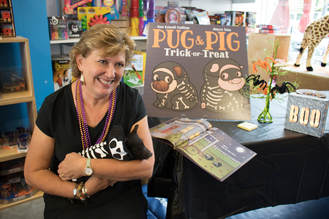 by Sue Lowell Gallion, Guest 24 Carrot Blogger I really appreciate how 24 Carrot Writing reminds us to pay attention to both parts of our split personality – writer and author. I’ve focused primarily on my author side in the past year, with my debut picture book, PUG MEETS PIG (illustrated by the amazing Joyce Wan, published by Beach Lane Books/Simon & Schuster), releasing in September 2016 and a second Pug and Pig book, PUG & PIG TRICK-OR-TREAT, which came out July 25. However, I don’t know that my writer self ever considered what it meant to market and promote a seasonal picture book, both for the publisher and the author. I think a lot of us as writers naturally gravitate toward plots that center on a holiday. Holidays are milestones in any child’s or family’s life, as well as our own. I remember holidays and traditions more vividly than the every day, whether it was choosing a Valentine for a boy in my third grade class that didn’t seem mushy (was “pease be my podner” over the top?) or “cooking” in my cousins’ toy kitchen with our hardboiled Easter eggs (until our parents found us. . . ) The inspiration for Pug and Pig’s Halloween adventure was my black lab mix’s reaction to the terrier next door dressed in a skin-tight, glow-in-the-dark Halloween costume. That’s not a story starter that works well with other settings. (However, an unexpected plus to the book has been hearing from parents of children with sensory issues that their kids relate to Pug’s dislike of his tight costume and his mask. That’s really exciting!) But the marketing slot for a seasonal book, such as PUG & PIG TRICK-OR-TREAT, is really tight. In bookstores, Halloween books go on display after Labor Day, after Back to School peaks. Last year, I was in a bookstore on the morning of Oct. 31. Halloween was already packed up, replaced by Thanksgiving, Christmas, and Hanukah. Think of the February holidays – Groundhog Day, Valentine’s Day, the Presidents. The peak time for story times or presentations using these books at schools, stores, and libraries is also less than six weeks. My local librarians confirm that Halloween books, as well as other holiday books, are checked out all year long. My kids chose holiday picture books any time of the year, too. I probably can still recite most of CRANBERRY THANKSGIVING by Wende and Harry Devlin, and that isn’t because we read it only in November. Kids aren’t particularly concerned with the calendar versus how they respond to a particular book. A seasonal book may be more attractive for guest blog posts, because bloggers like timely and topical posts. But once the holiday is past, promotion will likely seem out of place. In contrast, a birthday book or an afraid of the dark book, or any more universal theme or experience, can be promoted any time. I’m having a ton of fun with the Halloween book, although this is a crazy six weeks. Because Pug and Pig wear skeleton costumes, of course I hunted for a skeleton costume of my own. Finding something that wasn’t going to scare little kids turned out to be a challenge. It’s hard to find a friendly-looking skull. A skeleton apron seemed to be the best option. I start events without the apron on. If the kids are really young, I may stick with orange and purple beads. There’s always that tension between what we write and whether there might be a market for that manuscript. “Write what you love” doesn’t always match “there’s a place for that book on our list.” I’d be interested to know how many debut books actually are holiday books. My speculation is that a holiday book is more likely marketable after an author has other books out, or if it is a companion book or sequel featuring characters in an existing book. Come November, I’ll be focusing more on my writer self. I plan to be more organized about goal setting for writing and revising as well as my author/business responsibilities. However, as I make my way through this hectic October, I’ve rediscovered that candy corn is a fine carrot for me. And fortunately, it’s on the shelf all year long.  by Francine Puckly Many of us are blessed with dedicated writing and creating spaces. The rest of us are not. Or maybe we are required to work in a difference place for a brief period of time or perhaps we’ve decided to go on a writer’s retreat. Regardless of the reason, it pays to have our projects organized for portability, whether we’re traveling to the living room, the library, or another state. While I have a dedicated writing space (my bedroom), I often squeeze my writing in and around the rest of my family’s schedule. That could be at a baseball field, the dance school parking lot or the dentist’s office. I also love to sprawl out at parks or outdoor cafes on mild days, hunker down at the local library on rainy days, or get into a groove at the local bookstore while I tackle plot or character development issues. Prior to this summer, I probably had an 80% success rate of packing the correct work material when I worked away from home. Sometimes I caught the oversights while still in the garage. But other times I would be settled at a library table when I discovered missing pieces. I knew this summer had to be different. I had to have a 100% success rate. After an extensive knee reconstruction, my college-aged, working-in-Boston, can’t-drive-for-seven-weeks daughter would need me to taxi her—and wait for hours at a time—on a daily basis. It was unacceptable for me to be stranded somewhere waiting for her without the proper writing materials. But I also didn’t want to waste time packing, unpacking, and repacking my files—and worrying that I was forgetting something. There was way too much room for error with that system. Order, complete order, was needed. I spent the better part of May organizing my electronic files and then turned my attention to my paper files. Every last piece of paper was filed. And my paper files mirrored my electronic files, so that items could be located quickly. But to be truly portable, my paper files required the right equipment. After consulting internet resources and a few organizing books, I decided the tools required to make this happen were extra-capacity, reinforced hanging folders, manila (or decorative!) files, and a portable hanging file tote. I created an extra-capacity hanging file for each of my projects--all of them, including those picture book manuscripts covered in cobwebs, abandoned novels or portions of novels, and current novels in various stages of drafting and revision. Each project had its own hanging file, and those hanging files contained manila folders labeled:
Switching between projects became a snap. All of my hanging files were organized the same way, and I could pop a file in or out of the tote.
The last step to peace of mind was establishing a list of all the little items that had to come along with me each day in a separate messenger bag. I “laminated” this list using packaging tape. Your list might look different than mine, but these were my essentials:
While this level of detail might seem like overkill, I only had to create the list once. Each morning I scanned my bag and checked off the list. I took the thinking out of packing and poured that energy into my manuscripts instead. So if you’re taking your writing on the road, I hope these suggestions will help make your portable life stress-free! And happy writing…wherever the day may take you. ~ Francine  By Kelly Carey A few years ago, I was at good friend’s wedding and I knew the bride was hoping for a packed dance floor. Three songs in and the parquet square was painfully empty. My husband grabbed my hand and said, “Come on, let’s get this party started.” I love to dance and I wanted my friend to have the wedding party she deserved. So we hit the dance floor. Two twirls around and I lost my nerve. Twenty tables of ten times two eyes – you do the math – it was a lot of eyes and I could no longer hear the music. My feet became blocks of cement and every muscle in my body turned rigid. My husband was left trying to twirl a two by four stuck in a five-gallon drum of cement across the floor. I was a dance partner even Derek Hough could not successful spin around. Our friends at table 4 laughed and waved, but no one joined us. The song mercifully ended and my dejected husband dragged his two by four wife back to her seat. We had failed. The party had clearly not started. Why do I share this humiliating failure? And what does it have to do with writing? The same thing can happen to your manuscript. You can have the best idea, set out onto that empty page completely ready, but a few paragraphs in you seize up, just like I did on that dance floor. Here is how it happens. You stop feeling the joy of your own creative energy and you let self-doubt and fear take over. Instead of using your magnificent imagination to conjure up characters, dialogue, and plot twists, you use all your creative energy generating negative comments by potential readers. You drown out the sound of your own writing melody and BAM – you’re a two by four: stiff, halting, and unable to let a single sentence flow across the page. Pieces of lumber cannot write. When you let the thought of how this agent, that editor, or that critique partner will react to every word, sentence, or paragraph, those imagined criticisms will interfere with the exuberance of your writing. Your writing needs to flow with energy and reckless abandon. Judgment is like a giant dam blocking off your writing. You need to bust through that dam. Take a few cleansing breaths and focus only on that positive creative voice in your head and then just write exactly what it tells you to write. That’s it. No judgment, no critique, no mocking friends at table 4, no cement, no two by fours; just you and the sound of your fingers tapping out brilliance across a keyboard. I failed to fill the dance floor at my friend’s wedding because the other guests didn’t see a woman rocking out to her favorite song. Instead they saw my pain, discomfort and humiliation. Who would want to join in on that? If you want readers to share in the joy of your writing, you need to make the process joyful. Judgment and doubt are joy killers and they have no place in your early drafts. Write like you want a full dance floor. Ignore the tables of eyes, and just listen to your own creative music. Readers will come if they can feel the joy in your writing. Deep breath. Hear your music. Go! Dance! Write! 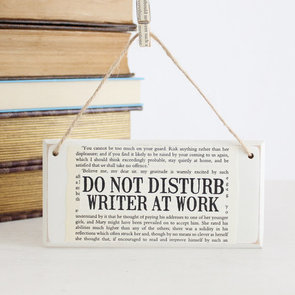 By Kelly J. Carey I took a bold step this year and decided not to attend the NE-SCBWI conference. I love this conference, and making the choice to miss out on inspiring lectures, helpful lessons, and the fun of communing with my fellow writer’s was not easy. But here is where I was mentally. I was not lacking in inspiration. I had writing projects in various stages from tidy third and fourth drafts, to word files with a few phrases of an idea, to a synopsis lacking middle grade novel that were all waiting my time and attention. I was not lacking in motivation. For months I had been drifting off to sleep thinking about those projects and waking up wondering if today would finally be the day I would find time to dig into them. Driving in the car, I’m thinking of one of those word files. Waiting for my son’s lacrosse practice to let out, I’m wondering about the third draft of a picture book. I have not lathered my hair in the shower in weeks without ruminating on a plot path of a new story. My desk is piled with notebooks from prior conferences stuffed with craft improving handouts, epiphany inducing notes highlighted with stars, writing prompts that actually make my fingers itch, and sticky-note worthy quotes from authors and editors. I had inspiration, motivation, and tips and tricks galore. What I lacked was activation. I had fallen into the trap of talking and learning about my craft without actually practicing it. At a certain point, you need to take a break from learning and apply what you have learned. You need to write. So that is what I did this spring. I poured over those great notes and applied suggestions on voice, editing, and character to three picture book manuscripts. I employed those fantastic writing prompts to flush out characters and plot in two developing picture book ideas. I still need to write the synopsis for my middle grade novel, but now those motivational quotes feel more like congratulatory toasts. Don’t be afraid to take a pause from learning. I recommend that you shut your door, quiet your brain, and let yourself write. Relax and know that you have skills, that you have worked on your craft, that your mind is open and ready to be creative. Use all your time, energy, and focus to create. The conferences, the lessons, the writing community will be there – but take a moment to just be you and your writing. A productive pause, to apply all the knowledge that you have collected, can be the most rewarding conference you have ever attended. You, your knowledge, and your desire to write – a private conference for three. Have a great conference.  by Francine Puckly For a few years now, I’ve been contemplating hopping on the NaNoWriMo bandwagon. I’ve held off for a number of reasons. First, I compose my initial drafts longhand, pen to paper, which makes tracking word count a bit tricky. Second, it’s No-School-November, a month in which school administrators conspire against writers by slotting in numerous half days or complete days off for everything from parent-teacher conferences to elections to holidays. The final reason, not to be taken lightly, is that immersing myself in an international phenomenon with social media chats, blogs, and the like would most likely make me less productive when I hear that hundreds or thousands of other people are writing faster than I am. That said, I had been researching my next book on and off for six months and had muddled over the plots, subplots, characters and setting. I was ready to tackle the next novel, and I desperately wanted to have a large chunk of the book on paper before the holiday season hit. There were no good excuses not to dive in. I decided to customize a NaNoWriMo challenge. As a longhand writer, I determined how many pages I could write in one day. I created a monthly calendar with the goals written in, first by week then by day, with an overarching monthly goal as well. Those goals were all well and good, but I knew I couldn’t go it alone. I’ve tried that. When things get tough, I fall off the writing. First one day. Then another. Then another. Instead, enter my accountability partner. Now, I probably should have asked her first before I made her my partner, but since we’ve been having weekly phone chats and setting goals together for three or four years, she gladly accepted the appointed position. I asked nothing of her except to receive daily texts stating that I had completed that day’s goal. Only eight days into my challenge, her presence has saved my writing day three or four times already. My energy is flagging. Small (and big) crises that have hit my life this week would have been excuses to adjust my goals. But my accountability to her is priceless. She responds to every text, congratulating me, encouraging me to keep going. It’s a beautiful thing to be on this journey with her. If you have aggressive goals for a future project, don’t go it alone. Ask a trusted colleague to be your accountability partner. Everyone benefits from having a cheerleader who understands the game. And the flip side of that, offer to be someone else’s rock for their project. Hold someone’s hand. Or ask someone to hold yours. You’ll be amazed at the “impossible” things you will accomplish when someone’s waiting for you to check in. Francine |
Peruse blogs for advice and tips from KidLit creatives.
Categories
All
Archives
April 2024
Click to set custom HTML
Click on the RSS Feed button above to receive notifications of new posts on this blog.
|

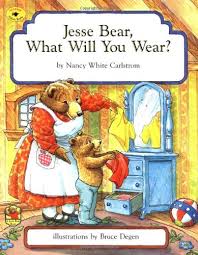
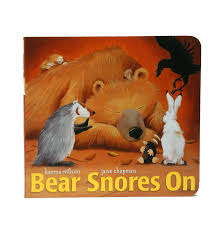
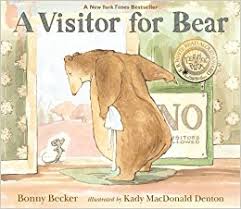
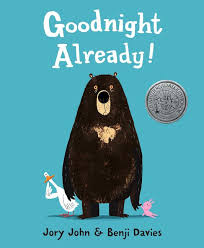
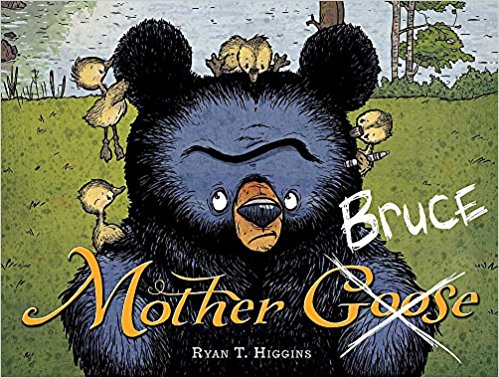

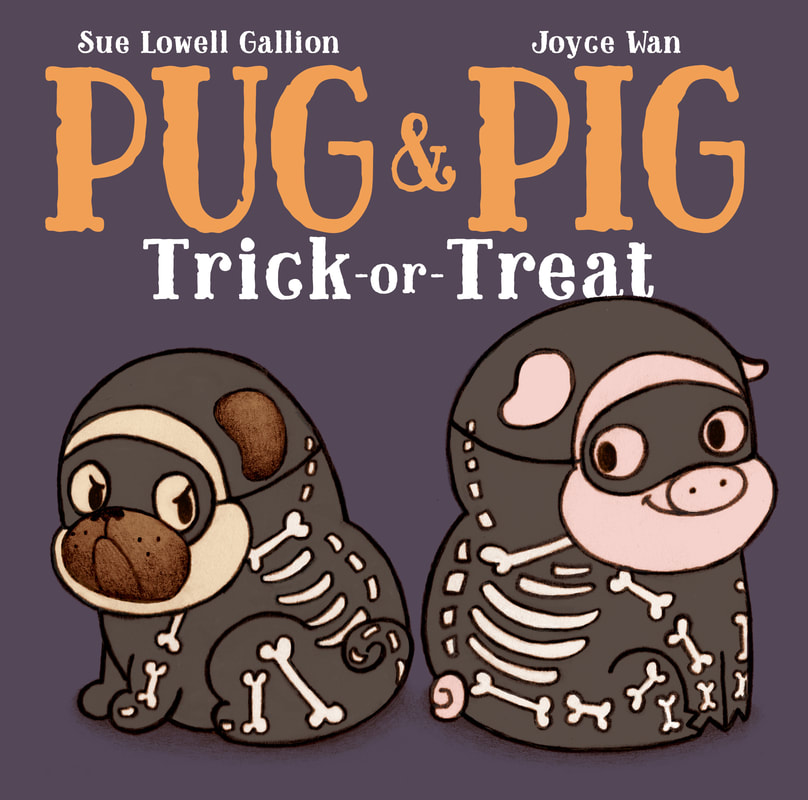
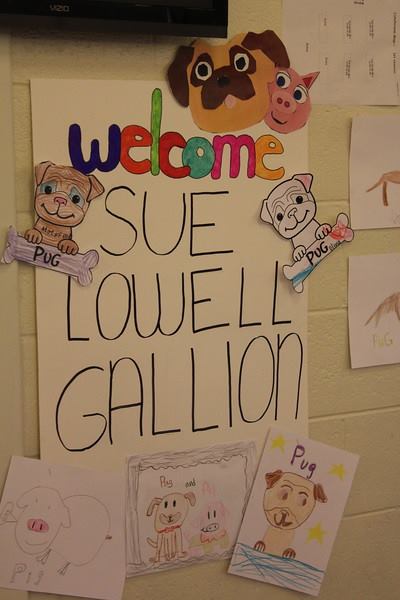

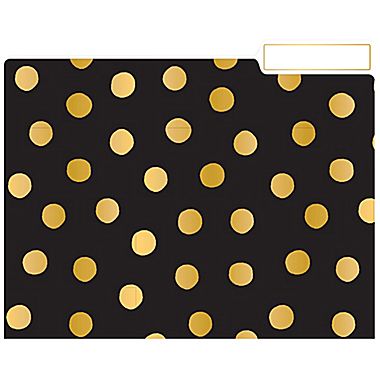

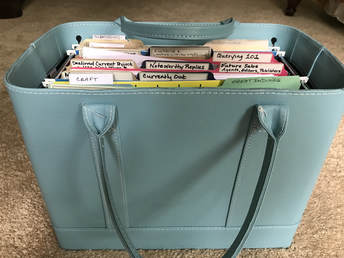
 RSS Feed
RSS Feed